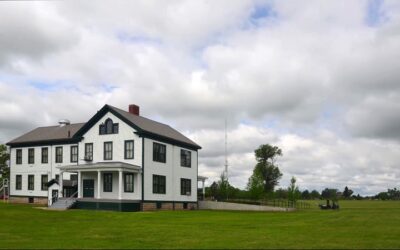 “The Herald observed Arbor Day duly and regularly,” reported editor J. D. Calhoun in the Lincoln Weekly Herald on April 26, 1890. In honor of the holiday, Calhoun bought small trees from a local nursery and hired two men to help plant them. The project had depressing, yet humorous, results, with Calhoun doing most of the heavy work while the two hired men “busied themselves holding the trees straight and bringing water to pour on the roots.”
“The Herald observed Arbor Day duly and regularly,” reported editor J. D. Calhoun in the Lincoln Weekly Herald on April 26, 1890. In honor of the holiday, Calhoun bought small trees from a local nursery and hired two men to help plant them. The project had depressing, yet humorous, results, with Calhoun doing most of the heavy work while the two hired men “busied themselves holding the trees straight and bringing water to pour on the roots.”
The following day Calhoun was suffering from “178 different, separate and distinguishable aches and pains.” But he was most discouraged by Lincoln friends who stopped during the planting to offer unsolicited advice:
“Joe McBride came along about 5 p.m. and looked over the fence, saying, ‘What in the name of St. Christopher are you mulching your trees for before they’ve had a rain? It’ll kill every one of ’em.’
“Half an hour later we were just removing the mulch from the last one when Charley Boggs drove up . . . . [H]e shouted, ‘put that mulching right back. Your trees’ll never start a leaf bud if you leave ’em exposed to the hot sun and dry wind that way.’
“He had hardly gone before Jack Macfarland hailed us. ‘Been planting trees, I see?’ ‘Yep.’ ‘Did you water them as you put them in?’ ‘Yep.’ ‘Well, I’m sorry for you. They won’t grow. The wet earth will form a hard ball about the roots and they will perish of starvation. Next year, when you replace these, you’ll know enough to plant them right.’
“The last dust from his buggy wheel had hardly settled in our ear when J. H. Harley paused long enough to remark, ‘That’s what I like to see. Can’t have too many trees. Did you water them well?’ ‘Nope.’ ‘You didn’t? They’ll never grow. A tree needs to be freely watered when it is set out. If it isn’t the roots will wither and die for want of nourishment.’
“And Harley went his sympathetic way. By this time it was dark and we went into the house and oiled our thinking machine. But it wouldn’t go. It was hopelessly damaged internally.”
The James D. Calhoun House in Lincoln was constructed in 1889-90. It is now on the National register of Historic Places. NSHS Historic Preservation LC13:CO6-304




